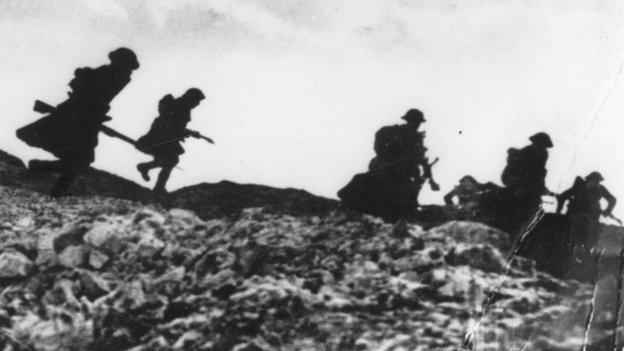World War One: Somme painting centrepiece of exhibition
- Published
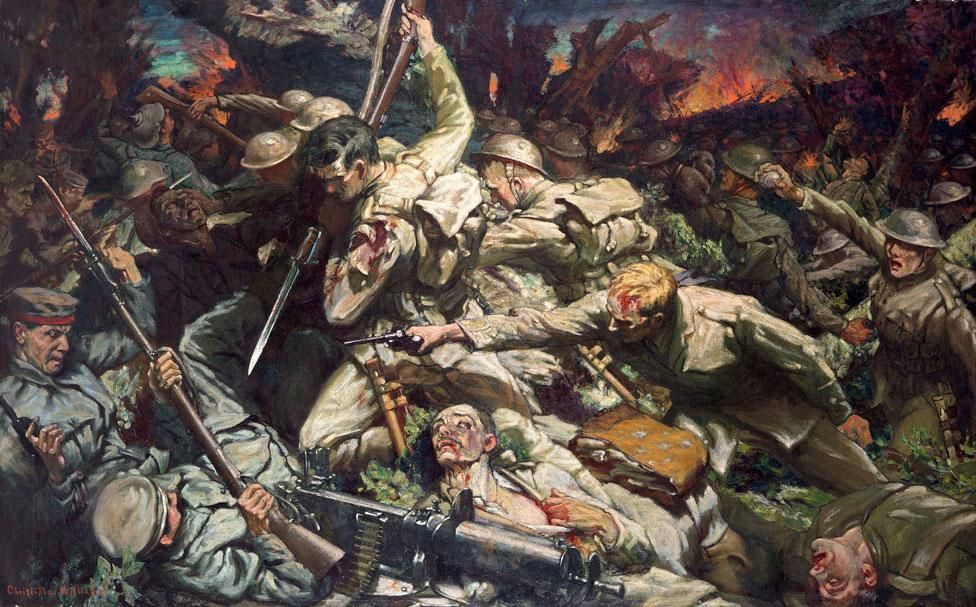
Christopher Williams (1873-1934), The Welsh Division at Mametz Wood, 1916
A painting depicting a World War One battle in which hundreds of Welshmen died is the centrepiece of a new exhibition marking its centenary.
About 4,000 men from the 38th (Welsh) Division were killed or injured at Mametz Wood during the battle of the Somme.
Welsh artist Christopher Williams travelled to the western front a few months after the battle in July 1916.
The National Museum Wales show opens on Saturday.
War's Hell brings together art, poetry and writing by those who witnessed the battle first hand, as well as others who responded to it.
Senior curator Beth McIntyre said the exhibition was about "the human response to that battle".
'Very gory'
She called Williams's work, The Welsh Division at Mametz Wood, "a very dramatic painting".
"The figures are nearly life-size. It's very gory, he doesn't hold back," she said.
"He wanted to show the terrors of war, and I think that really comes out in the painting.
"It was hung in Downing Street. It would be wonderful to know the reaction of some of the people who visited it."
Williams was born in Maesteg in January 1873, the son of a grocer.
He was making his living as a portrait artist when he was commissioned to commemorate Mametz Wood by the Secretary of State for War David Lloyd George.
He had already notable commissions, including painting the Investiture of Edward, Prince of Wales - the future Edward VIII - at Caernarfon Castle in 1911.
Lloyd George was something of a patron and Williams painted three different portraits of the former prime minister, as well as the Welsh statesman's father.

VISITING THE SOMME
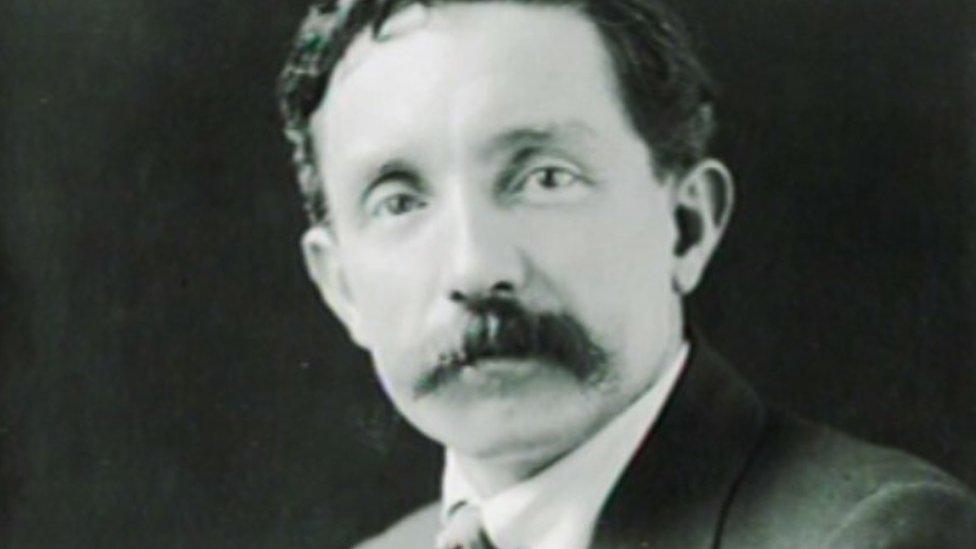
Williams went to the Western Front to see the aftermath of the Somme battle for himself
Work on his wartime commission would lead to Williams visiting the Somme in November 1916 - four months after the battle.
He was seasick during a storm on his Channel crossing, then took the train to Amiens before being driven with official war artist Muirhead Bone to the battle site.
In one of his letters to his wife, Williams wrote:
'I have had great times and met with exceptional kindness and every help possible. The weather has been anything but favourable still I have done what was necessary and went to where I intended and am off elsewhere tomorrow.
"All I can say it passes all my imaginings and I hope to do something passable at any rate."
However, while sketching in a trench, in civilian clothes, he was arrested by a suspicious soldier, who marched him to his superiors.
"He was convinced I was a German spy, though I spoke Welsh and English, and that my passports were forged," said Williams on his return.
"Of course I understood that the man only did his duty, but I did not realise how desperate the position was until I mentioned the incident at the War Office on my return. Then I was told: 'Mr. Williams, you are a very lucky man. It's a wonder you were not shot at sight'."

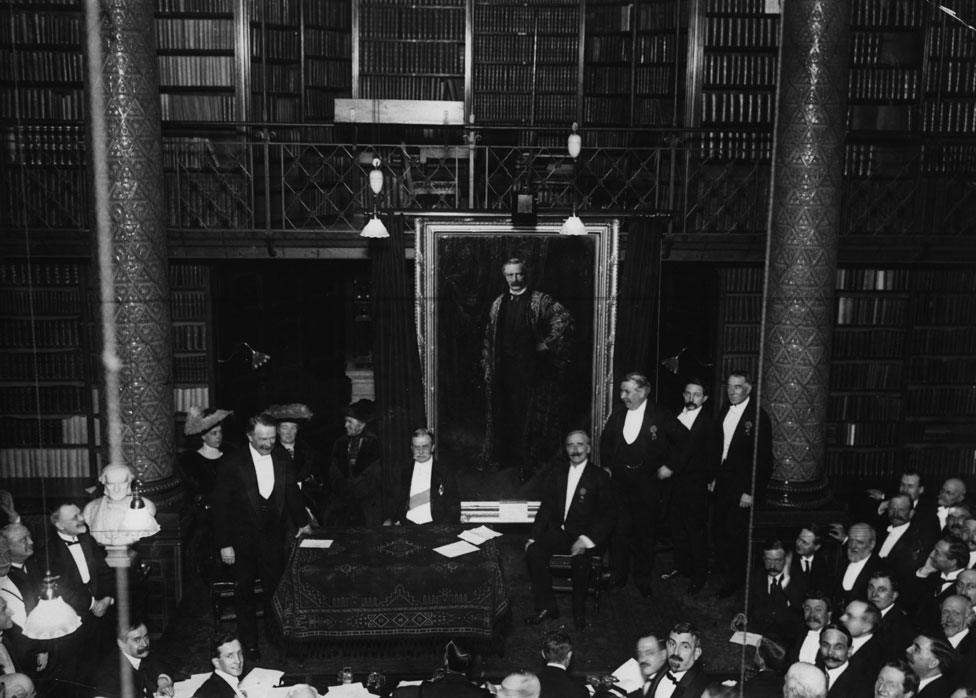
David Lloyd George unveiling one of his portraits by Williams in 1913
When Williams died aged 61 in 1934, Lloyd George described him as "one of the most gifted artists Wales has produced".
Despite this, his name has been largely forgotten although his work and legacy was the subject of a major retrospective in Aberystwyth four years ago., external
Five of Williams's works hang in Maesteg town hall, including one of his father Evan and another, Look Dad I'm a Judge, of his young son dressed as a judge.
The site of the family grocer's shop is now a nail salon but there is a plaque above it to the talented boy who, as a 20-year-old, won a scholarship to the Royal College of Art.
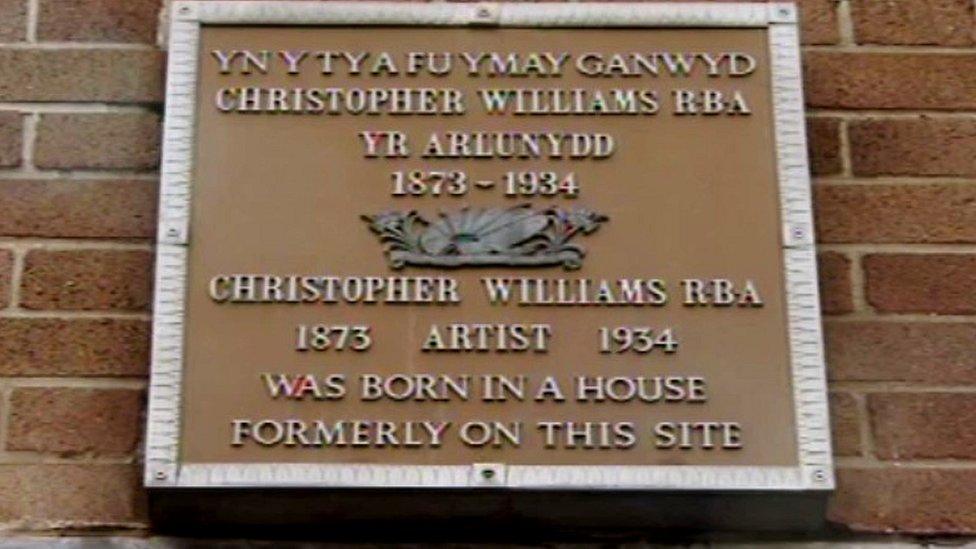
The site of the house where he was born is now a nail salon

Williams's subjects also included folklore, the Welsh landscape and his family. Holidays - On the Sands, Barmouth Island, 1917

Capt Ben Phillips said the Mametz experience was 'humbling' to the modern regiment
Robert Meyrick, professor of art at Aberystwyth University, tells Huw Thomas about the painting.
The painting is now usually on loan to the Royal Welch Fusiliers Regimental Museum in Caernarfon.
Capt Ben Phillips, regimental adjutant of The Royal Welsh, said it was important to understand the Welsh connection to Mametz.
"I'm the modern day equivalent of one of the officers who would have fought during World War One in Mametz Wood," he said.
"We would have fought and done exactly what these guys did, and understanding that Welsh connection is really important, for officers and soldiers.
"Young soldiers come in [to the exhibition] and realise that what we've done in Afghanistan and Iraq in the last couple of years possibly pales into insignificance compared to some of the hardship that the guys before us had to endure, so it's quite humbling really.
"Mametz Wood is the one occasion where, during the modern era, Welsh soldiers were fighting hand-to-hand with the enemy. That's quite rare, and that's why it resonates, because it's quite dramatic."

OTHER WORLD WAR ONE ART AT THE EXHIBITION
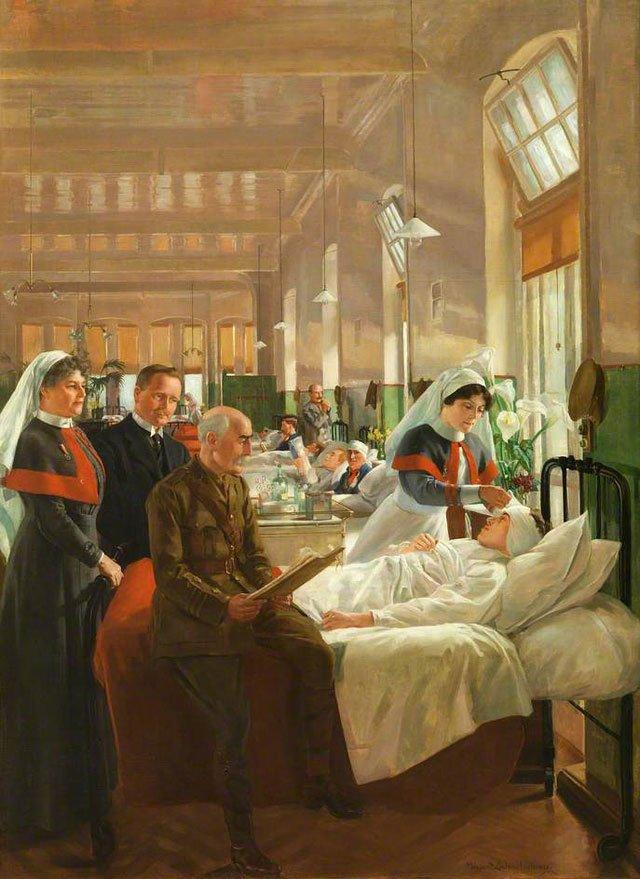
Care of Wounded Soldiers at the Cardiff Royal Infirmary by Margaret Lindsay Williams
A pistol carried by the poet Siegfried Sassoon is on display, alongside sketches, oil paintings and preparatory sketches from artists including Bone and Margaret Lindsay Williams, external.
She was rejected when she volunteered to become an official war artist because she was a woman. Williams painted Care of Wounded Soldiers at the Cardiff Royal Infirmary in 1916. The ward was later named Mametz Ward.
Visitors will see drawings and poems composed in the trenches, as well as large-scale works painted in the years after the battle.
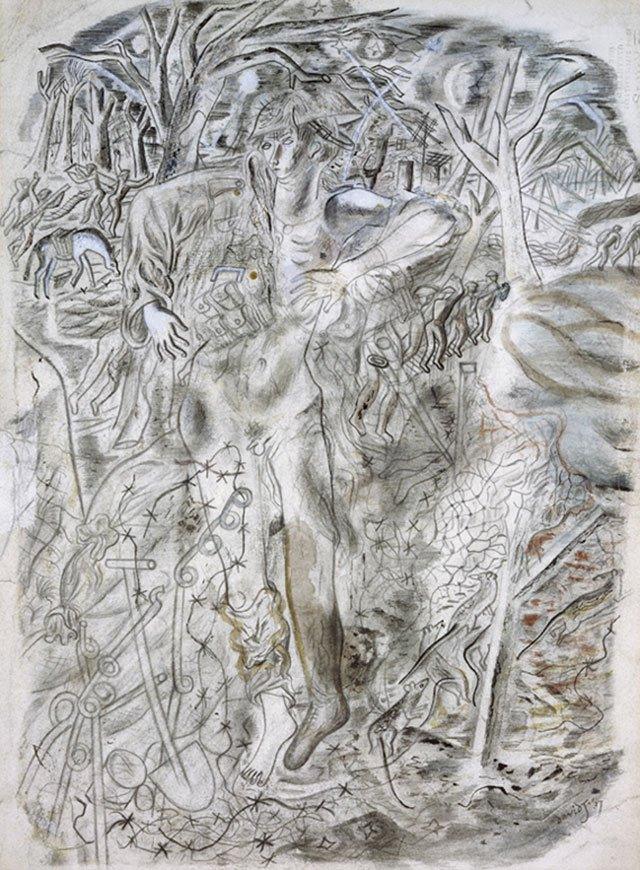
Front piece for In Parenthesis by David Jones in 1937
The exhibition also brings together the largest group display of David Jones' war drawings. A total of 26 sketches are included from the poet and artist's time at the Somme serving with the Royal Welsh Fusiliers.
"It's about the poetry, the writing and the art that was produced specifically referencing that battle," said Ms McIntyre.
"A lot of it was by soldiers who were there, by artists and writers such as David Jones."
While some works, including the Williams painting, are part of the National Museum's collection, many others have been loaned from other institutions and private owners.
The more irreverent works include Jones's sketches of dead rats littering the trenches.
The exhibition War's Hell!: The Battle of Mametz Wood in Art , externalwill be at National Museum Cardiff from 30 April to 4 September 2016.
- Published25 October 2015
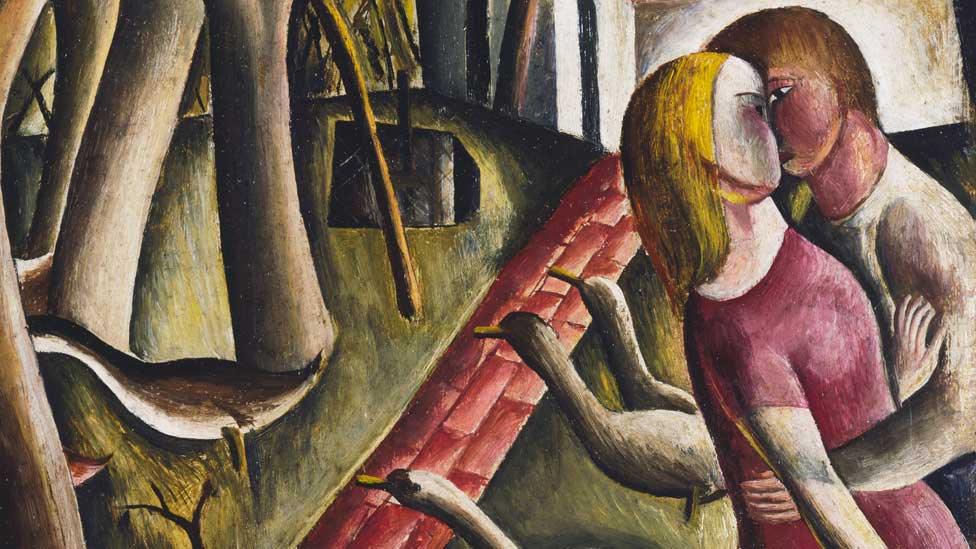
- Published10 November 2014
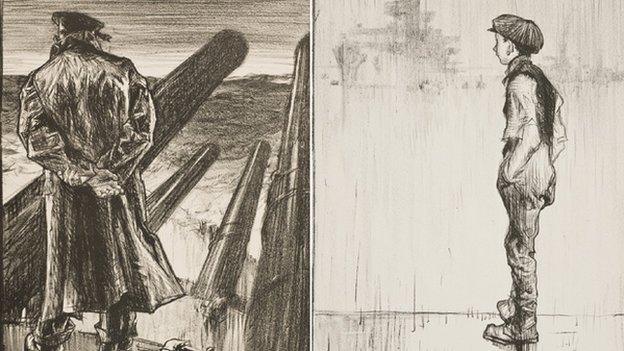
- Published6 August 2014
